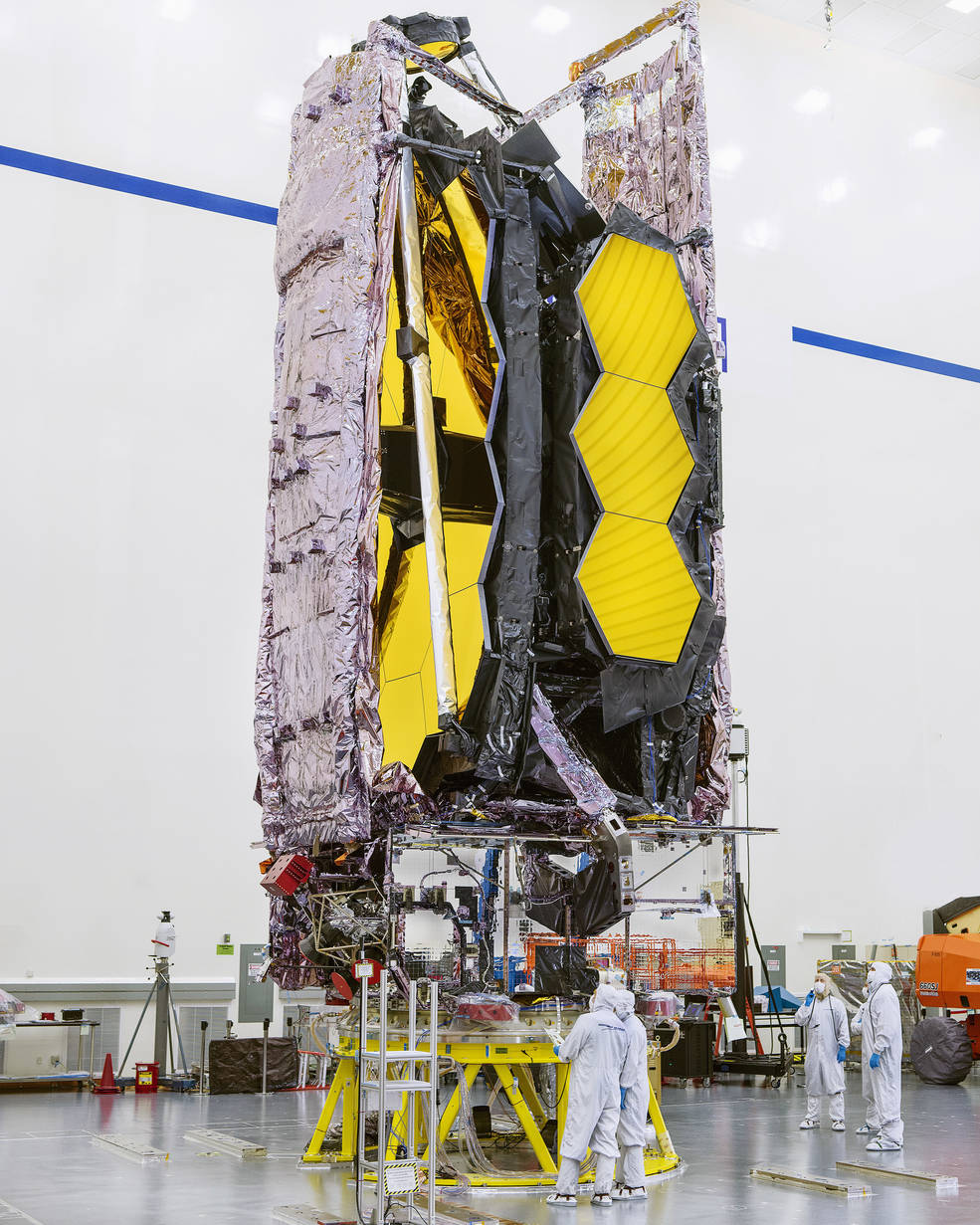
Almost there! After years of delays, NASA’s James Webb Space Telescope (JWST) is finally nearing its launch date. This week, NASA announced that JWST has completed its final tests. This is a huge milestone, and now the telescope is being prepared for shipment to its launch site at Arianespace’s ELA-3 launch complex at the European Spaceport in Kourou, French Guiana. The testing was conducted at Northrop Grumman.
Now, after many years of design, construction and testing, JWST is ready to be shipped to the launch site. A fairly long journey lies ahead, going through the Panama Canal to French Guiana, which is on the north-eastern coast of South America. Shipping preparations are scheduled to be completed in September. The telescope will be shipped folded up “origami-style” to the launch site.
“NASA’s James Webb Space Telescope has reached a major turning point on its path toward launch with the completion of final observatory integration and testing,” said Gregory L. Robinson, Webb’s program director at NASA Headquarters in Washington. “We have a tremendously dedicated workforce who brought us to the finish line, and we are very excited to see that Webb is ready for launch and will soon be on that science journey.”
The primary task now is to make sure the large telescope arrives safely at its destination, and a lot of necessary steps are involved. Previously, during testing, the focus was on making sure JWST could survive the launch and operate normal once in orbit. That has now been successfully completed, and it is simply a matter of moving the telescope to the launch pad.
There is still other work to be done as well however. Technicians at Webb’s Mission Operations Center (MOC) at the Space Telescope Science Institute (STScI) in Baltimore need to continue to check and recheck the complex communications network that the telescope will use in space. That is, of course, critical, and the most recent testing confirmed that it is capable of seamlessly sending commands to the spacecraft.
The mission team is also conducting live rehearsals of the launch at the MOC.
So what happens after the telescope arrives at the launch site?
The first thing is to give JWST a thorough examination to make sure that there was no damage during transport. If all checks out, the feeling of the propellant tanks can begin. The fuel consists of both hydrazine and nitrogen tetroxide oxidizer. Certain “remove before flight” items, like protective covers, will also need to be removed. Once all of that is done, JWST will then be attached to its rocket, an Ariane-5 that has been provided by the European Space Agency (ESA). Then, finally, the rocket and its precious cargo will be rolled out to the launch pad.
Once the telescope has safely reached orbit, after a 26-minute ride it will enter a six-month commissioning period. After separating from the rocket, its solar array will deploy automatically.
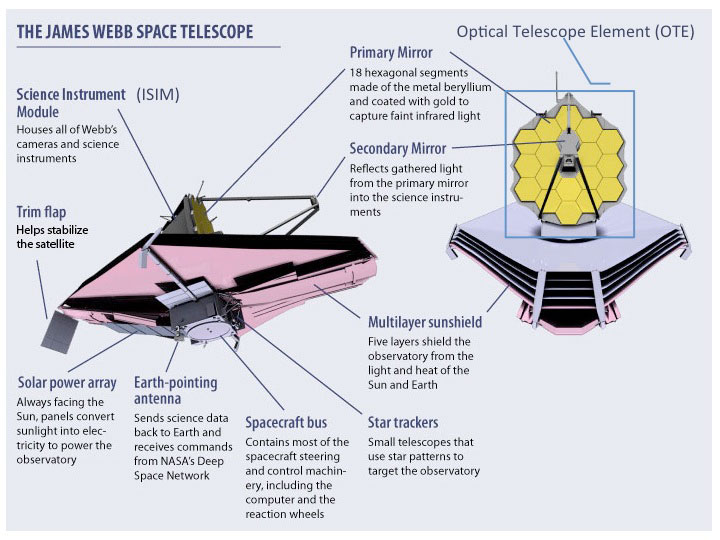
It will take one month for the telescope to settle into its permanent orbit, nearly one million miles from Earth. It will continue to unfold and deploy its instruments, including its Sunshield. The shield is vital for keeping the telescope cool, in shade from the Sun. The cool down will be monitored over several weeks, while the primary and secondary mirrors unfold. Finally, there will be alignments to its optics and calibrations of its scientific instruments over a period of several months.
After all of that is accomplished, the telescope will begin science operations about six months after launch.
Why is JWST so important?
The telescope is considered to be the successor to the Hubble Space Telescope (HST). It will expand upon Hubble’s discoveries, looking farther and deeper into the universe than ever before.
“To me, launching Webb will be a significant life event – I’ll be elated of course when this is successful, but it will also be a time of deep personal introspection. Twenty years of my life will all come down to that moment,” said Mark Voyton, Webb observatory integration and test manager at NASA’s Goddard Space Flight Center in Greenbelt, Maryland. “We’ve come a long way and worked through so much together to prepare our observatory for flight. The telescope’s journey is only just beginning, but for those of us on the ground who built it, our time will soon come to an end, and we will have our opportunity to rest, knowing we put everything on the line to make sure our observatory works. The bonds we formed with each other along the way will last far into the future.”
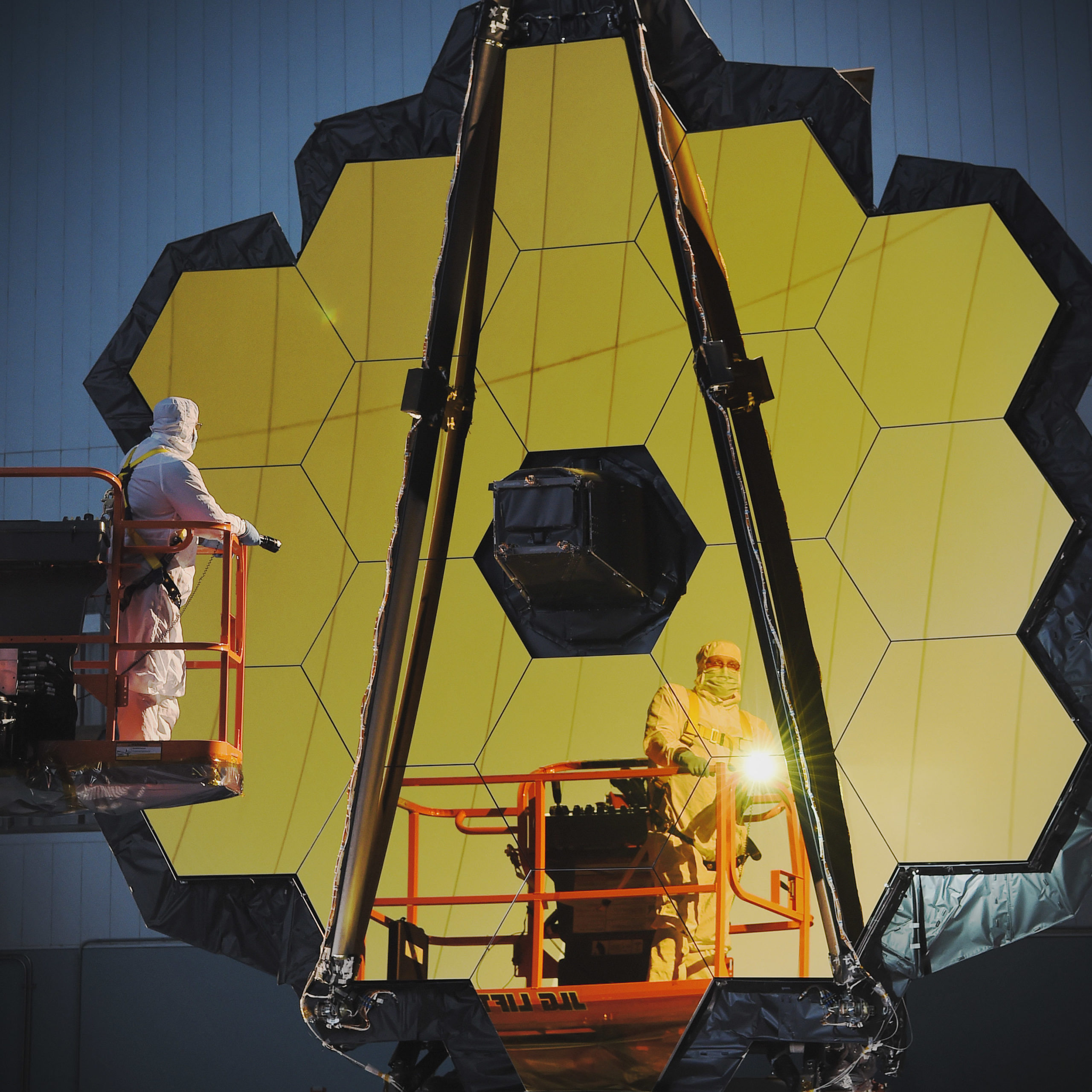
“After completing the final steps of the James Webb Space Telescope’s testing regimen, I can’t help but see the reflections of the thousands of individuals who have dedicated so much of their lives to Webb, every time I look at that beautiful gold mirror,” said Bill Ochs, Webb project manager for NASA Goddard.
The first targets for JWST include the earliest galaxies in the Universe, and the massive black holes at their centers, as well as the birth of new stars and planetary systems. It will also look at Europa and Enceladus, two ocean moons in our Solar System which are thought to be able, possibly, to support some form of life.
“Webb is designed to build upon the incredible legacies of the Hubble and Spitzer space telescopes, by observing the infrared universe and exploring every phase of cosmic history,” said Eric Smith, NASA Webb’s program scientist at the agency’s headquarters. “The observatory will detect light from the first generation of galaxies that formed in the early universe after the big bang and study the atmospheres of nearby exoplanets for possible signs of habitability.”
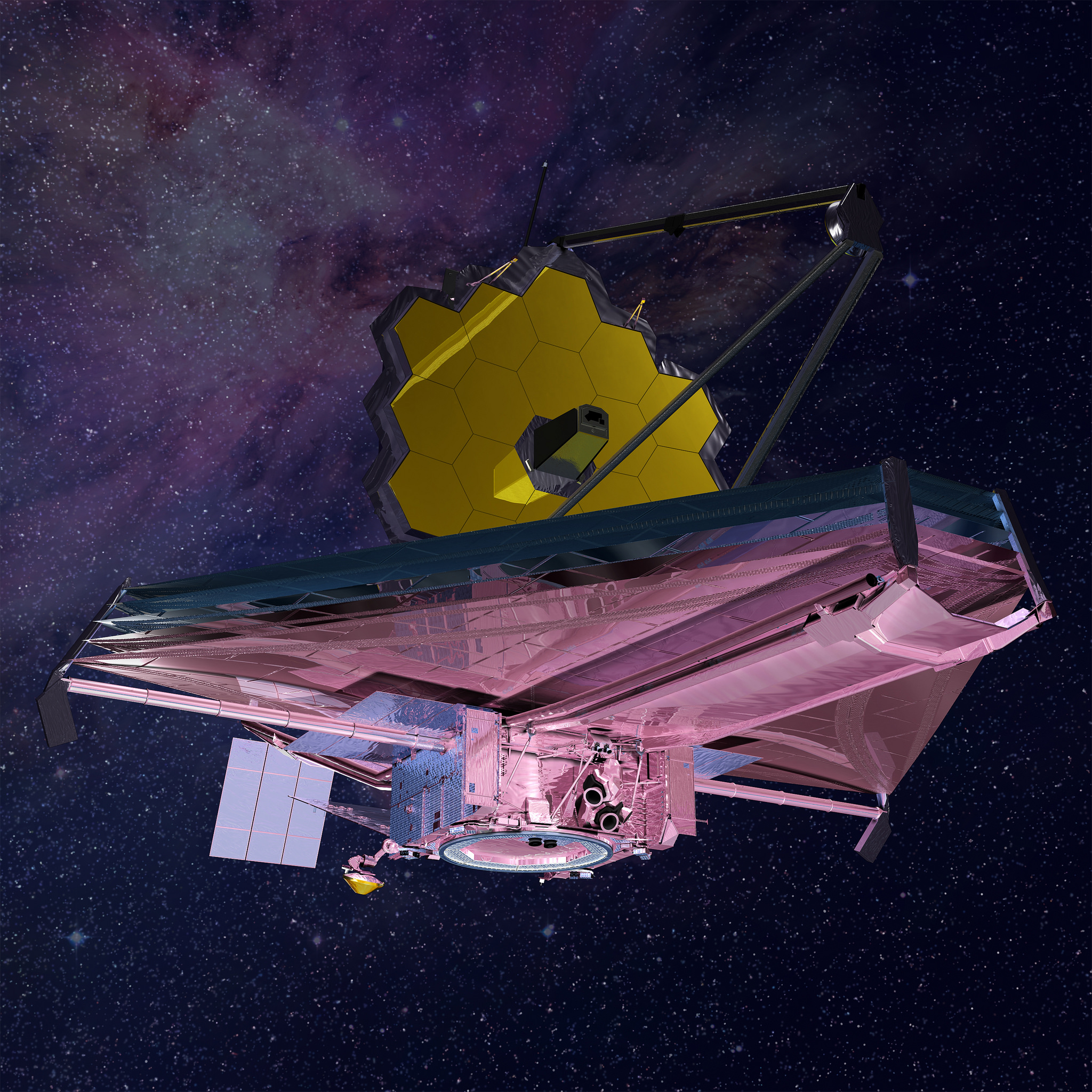
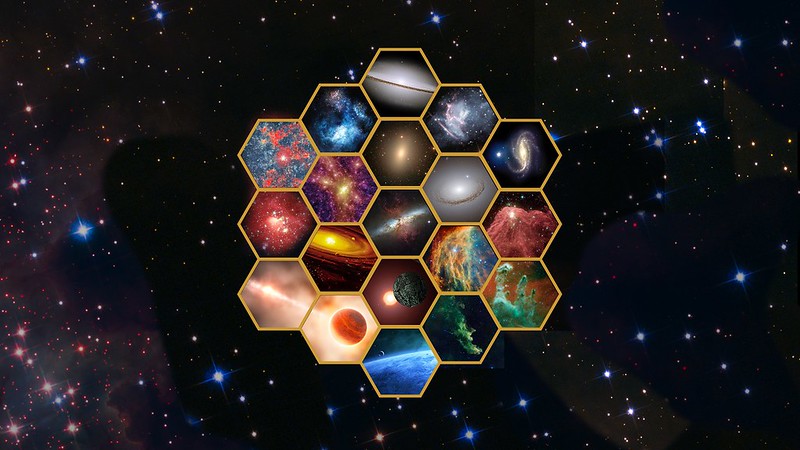
One of the most exciting objectives of JWST is to analyze the atmospheres of some closer exoplanets, including to search for possible biomarkers as evidence of life. JWST will help to narrow down which ones are potentially the most habitable.
“The atmospheres are harder to detect but the reward is higher. It would be very exciting to make the first detection of an atmosphere on an Earth-sized planet,” said David Lafrenière of the University of Montreal.
The primary mission goals of JWST include:
- Search for the first galaxies or luminous objects formed after the Big Bang
- Determine how galaxies evolved from their formation until now
- Observe the formation of stars from the first stages to the formation of planetary systems
- Measure the physical and chemical properties of planetary systems, including our own Solar System, and investigate the potential for life in those systems
There are only a few months left now until JWST’s launch, and there is good reason to be excited. Initially a complement to Hubble, it will then carry on from where Hubble eventually leaves off, and reveal our universe in more captivating detail than ever before.
JWST is scheduled to launch later this year, no sooner than October 31.
More information about JWST is available on the mission website.




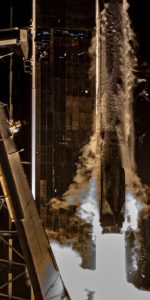
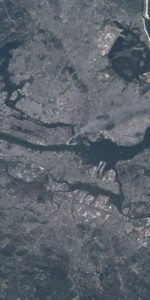
why is it being set for a long journey to south america when we have a space complex in florida that is fully capable of sending this platform to space with proven results by americans with jobs for americans it is sad that nasa is using a launch area so a distance but for that matter one that nasa could use right in their own back yard kennedy space centre or cape canaveral florida that is american tax money you are using for this trip to south america use it for american workers that help pay for the construction this enough to not want nasa to have funding for space programs that a major part of the money is tax payer investment and built and now in the final phases south american french eupopean spaceport french guiana is getting the final sendoff just not right
why is it being set for a long journey to south america when we have a space complex in florida that is fully capable of sending this platform to space with proven results by americans with jobs for americans it is sad that nasa is using a launch area so a distance but for that matter one that nasa could use right in their own back yard kennedy space centre or cape canaveral florida that is american tax money you are using for this trip to south america use it for american workers that help pay for the construction this enough to not want nasa to have funding for space programs that a major part of the money is tax payer investment and built and now in the final phases south american french eupopean spaceport french guiana is getting the final sendoff just not right i would like to also say thank you to all those hard working americans that put their life blood sweat and in some cases tears into this one venture thank you for all you have done
Earth spins faster nearer to the equator thus making it reach orbit easier.
Launching on Ariane is part of the European contribution that was built in from the start.